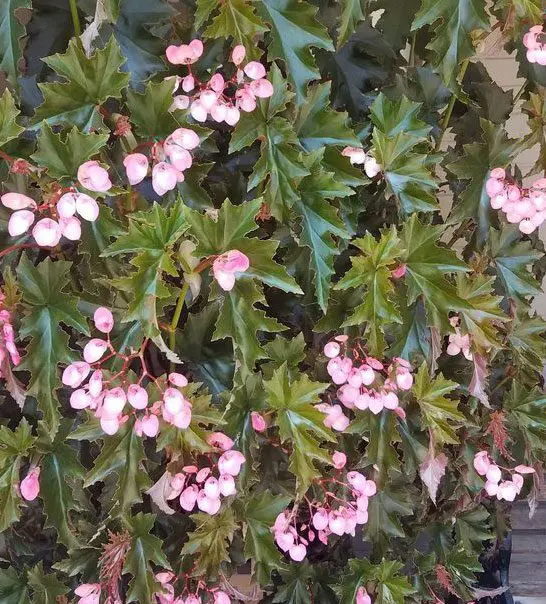This question comes up fairly often; “What is a superba?” What it means now isn’t necessarily what it has always meant. Also, I think there need to be some modifications to what the criteria is for calling a cane a superba type.
Originally, the definition of what made a superba was that it had certain parentage. Eva Kenworthy Gray produced the first superba type canes in 1926 when she crossed B. aconitifolia with B. ‘Lucerna’. The resulting plants all had names with superba in the name such as B. ‘Superba Azella’. Later, the superba name that she used in her hybrids was adopted to include all canes of similar parentage. The original definition included all canes that had B. aconitifolia , B. sceptrum , and B. leathermanaie (at the time known as B. plantanifolia ) as a parent. They all shared the feature of having large, lobed or deeply cleft leaves, on large growing plants. They were totally different than previous canes of the time so were separated out as a new type.
As you can imagine, since 1926 there have been lots of generations and a multitude of new hybrids created. Many have very mixed parentage.
Some newer superbas while having the correct background, such as having B. aconitifolia as a distant ancestor, have lots of other cane types in their background also. I guess it is easier to explain that all new superbas do meet the original definition, it’s what isn’t a superba that’s different. While originally all hybrids of B. aconitifolia , B. sceptrum , and B. leathermanaie were superbas, not all of their subsequent generations would now be considered superbas. An example is B. ‘De Cups’. One of its parents is B. ‘Jumbo Jet’ (a superba) and its other parent is B. ‘Lenore Olivier’ which is not. Technically, it is a superba because it has the correct parentage, but it lacks the lobed or cleft leaves which is what set superbas apart in the first place. In other words, it really isn’t a superba. A similar hybrid, as far as parents, B. ‘Lothlorien’ (B. ‘Jumbo Jet’ x B. philippine cane) does however have both the correct parentage and the lobed leaves. To further confuse you, B. ‘Little Miss Mummey’ (B. ‘Jumbo Jet’ x B. ‘Amelia’), is somewhere in between. It does have lobed leaves but not as large or as lobed as the other plants we associate with superbas like B. ‘Sophie Cecile’.
A more correct definition for what makes a cane a superba is one that has B. aconitifolia , B. sceptrum , or B. leathermaniae in its parentage and also has the lobed or cleft leaves. This would put some plants that have a little superba blood in them out of the superba division because they really don’t show the superba characteristics. Because of the blurring and interbreeding of superbas with the other types to introduce new characteristics, it’s probably time that some new classes are devised for canes that fall somewhere in between superbas and the rubra type. Rubra types are all the canes that aren’t superbas as in B. ‘Orange Rubra’. I’ve always had a problem with the use of “all others” to describe all the canes that aren’t either superba or mallet. Those should more correctly be called rubra type possibly. Those canes with serrations or different edging to the leaves, that may contain some superba blood but that aren’t fully superbas, could be called intermediate. Of course using those classes there are a few that fall through the cracks like B. lubbersii, who knows where to put that?


